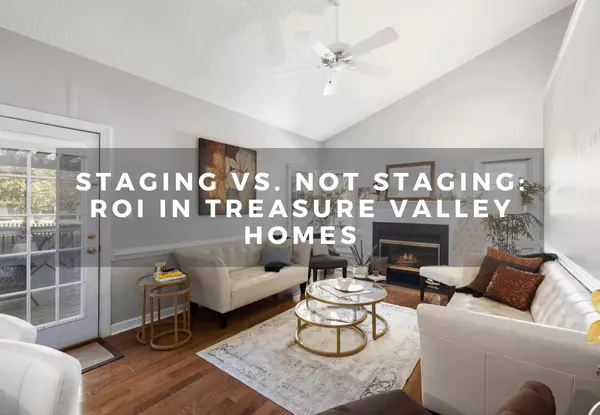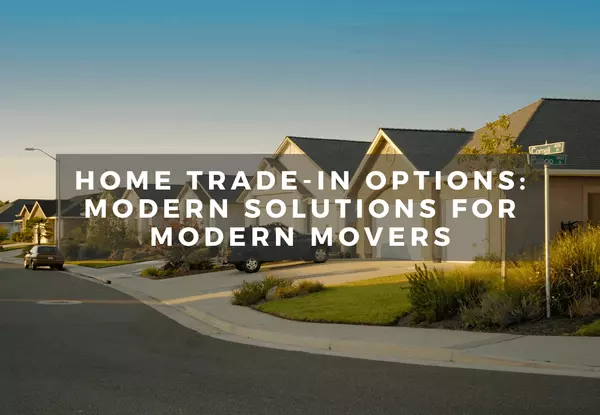Multi-Family Investment in Treasure Valley: 2025 Market Analysis, Opportunities, and Smart Financing Strategies

Why Multi-Family Properties Are Gaining Traction in Treasure Valley
If you're looking for a strategic way to grow wealth in Idaho's real estate market, multi-family investments in the Treasure Valley have become a serious contender. With Boise, Meridian, Nampa, and Caldwell continuing to attract inbound migration, rental demand remains strong—and investors are responding.
Whether you're a seasoned investor or a homeowner looking to house-hack your way to financial independence, this guide gives you a detailed look at:
-
Market performance of duplexes, triplexes, and apartments
-
Neighborhoods with the best growth potential
-
Key financing and lending strategies
-
Operational tips and ROI expectations
Let’s break down the opportunities in one of the West’s fastest-growing regions.
The Case for Multi-Family Investment in 2025
Population Growth + Affordability Crunch = Rental Demand
The Treasure Valley has added thousands of new residents annually over the last decade, with no signs of slowing. According to U.S. Census data and local projections:
-
Boise metro is now over 800,000 residents
-
Meridian, Kuna, and Nampa are among the fastest-growing cities in the Northwest
-
Remote workers and retirees continue to relocate here due to affordability and lifestyle
With home prices pushing first-time buyers out of the market, renters are staying longer, creating consistent demand for well-managed multi-family units.
Appreciation and Rent Growth Trends
In Q1 2025, the Treasure Valley continues to see upward pressure on rents:
-
Boise average rent: $1,625
-
Meridian: $1,695
-
Nampa/Caldwell: $1,350–$1,450
-
Duplex cap rates: 5.0%–6.5% depending on location and condition
-
4-plex and above cap rates: 6%–7.5% in secondary markets like Caldwell and Emmett
Investors are finding success by renovating C-class properties into B-class rentals, adding value through cosmetic updates, energy efficiency, or repositioning.
Where to Invest: Hot Spots for Multi-Family in the Treasure Valley
Boise Bench and West Boise
-
Unit Types: Duplexes, triplexes, mid-size apartment buildings
-
Why It Works: Central location, older stock with upside, high rental demand
-
Rental Range: $1,350–$1,850 per unit
-
Investor Profile: BRRRR method or long-term hold
The Bench offers classic cash flow and appreciation potential, especially near Vista Ave and Curtis Rd corridors.
Meridian
-
Inventory: Mostly newer 4-plexes or small complexes
-
Cap Rate: Slightly lower due to premium location and low vacancy
-
Why Invest Here: Consistent tenant base, modern amenities, HOA covers exterior
-
Best For: Passive investors, 1031 exchange buyers
Meridian’s high demand means low turnover, and tenants often stay 3+ years if properties are well-maintained.
Nampa and Caldwell
-
Unit Types: Triplexes, 4-plexes, 8-plexes
-
Price Point: Entry level for newer investors
-
Cash Flow Potential: Stronger rents relative to purchase price
-
Key Areas: College of Western Idaho, downtown Caldwell near Indian Creek
This is where smart investors are finding value and scaling quickly. Rent growth is outpacing Boise due to affordability and in-migration.
Eagle and Star
-
Luxury rentals only – limited inventory
-
High-income tenant base
-
Not ideal for cash flow, but great for long-term appreciation
If you’re building a balanced portfolio and want premium assets, a duplex in Eagle can add stability and asset quality.
Financing Your Multi-Family Investment
1. Conventional Loans (2–4 Units)
-
Down Payment: 15%–25%
-
Loan Limits: Based on number of units and county
-
Ideal For: Owner-occupants (house hacking) or small investors
Curtis Tip: Live in one unit and rent the others—this is the fastest way to build equity and reduce housing costs.
2. Commercial Loans (5+ Units)
-
Structure: Based on debt service coverage, not personal income
-
Term: Typically 5–10 year fixed with balloon payments
-
Lenders: Local credit unions, commercial lenders, national banks
-
Down Payment: Usually 20%–30%
Pro: Flexible underwriting
Con: Shorter amortization and higher interest rates
3. DSCR Loans (Debt-Service Coverage Ratio)
-
What It Is: Loan based on property income, not borrower’s W-2 income
-
Ratio Requirement: Typically 1.2x or higher
-
Ideal For: Self-employed or portfolio investors
Curtis Tip: We work with DSCR lenders who allow no income verification and can close fast. These are excellent for competitive offers.
4. FHA or VA for 2–4 Unit House Hacks
-
Down Payment: 3.5% FHA, 0% VA
-
Must Occupy One Unit
-
Incredible Leverage: Get into multi-family for under $20K out of pocket
If you're a veteran or first-time buyer, this strategy is hard to beat.
Making the Numbers Work: Evaluating a Multi-Family Property
When we help clients evaluate deals, here’s the core framework:
Step 1: Monthly Income
-
Rent from all units
-
Include pet rent, laundry, garage fees if applicable
Step 2: Operating Expenses (typically 35%–45%)
-
Taxes
-
Insurance
-
Management (if not self-managed)
-
Repairs & reserves
-
HOA (if any)
Step 3: Net Operating Income (NOI)
NOI = Gross Rent – Operating Expenses
Step 4: Cap Rate = NOI ÷ Purchase Price
This tells you the yield of the investment before mortgage and financing.
Step 5: Cash-on-Cash Return
= (Annual Cash Flow / Total Cash Invested) x 100
Real-World Scenario: Duplex in West Boise
-
Purchase Price: $525,000
-
Monthly Rent per Unit: $1,695
-
Monthly Expenses (35%): ~$1,185
-
NOI: $21,960
-
Cap Rate: 4.2%
-
Down Payment (25%): $131,250
-
Cash Flow After Debt Service: ~$5,760/year
-
Cash-on-Cash: 4.4% with future upside in rents
This property is a stability play, with room for cosmetic upgrades to push rents closer to $1,950/unit.
How to Find Multi-Family Deals (And Win Them)
1. Off-Market Deals
Through our investor network and direct mail campaigns, we routinely uncover off-market multi-family opportunities not found on Zillow or the MLS.
2. MLS & LoopNet
While competitive, these platforms can still work if you move fast and are pre-underwritten.
3. Agent Relationships
Curtis' investor clients get first look at pocket listings and deal alerts before they hit the public. We often pair investors with:
-
Local wholesalers
-
Builders with spec duplexes
-
Retiring landlords looking to exit
Operational Considerations
-
Management: Self-manage or hire a local property manager (~8% fee)
-
Leases: Month-to-month gives flexibility; 12-month gives stability
-
Maintenance: Budget $300–500/unit annually for routine maintenance
-
Tenant Screening: Background check, income verification, references
We recommend setting up a LLC and separate business bank account to manage income and expenses cleanly.
Long-Term Exit and Tax Strategies
1. 1031 Exchange
Sell a 4-plex and roll gains into:
-
A larger complex
-
A vacation rental property
-
Commercial real estate
No capital gains taxes if executed properly.
2. Cost Segregation
Accelerate depreciation to offset income. Works best on larger properties or those with new capital improvements.
3. Cash-Out Refi
Once rents go up, refinance and pull equity to buy the next deal without selling.
Curtis’ Final Thoughts
Multi-family investing isn’t just for Wall Street players—it’s one of the most accessible paths to wealth in real estate, especially here in the Treasure Valley.
If you're ready to start or scale your investment portfolio, the opportunity is here. Whether you want to house-hack a duplex in Boise or purchase a 12-unit in Caldwell, I’ll help you run the numbers, find the deal, and connect you with the right financing and management team to win.
Want a private strategy session for your next multifamily investment?
📲 Call or text Curtis Chism at (208) 510-0427
📥 Ready to relocate remotely? Download our Boise Relocation Guide
Categories
Recent Posts










